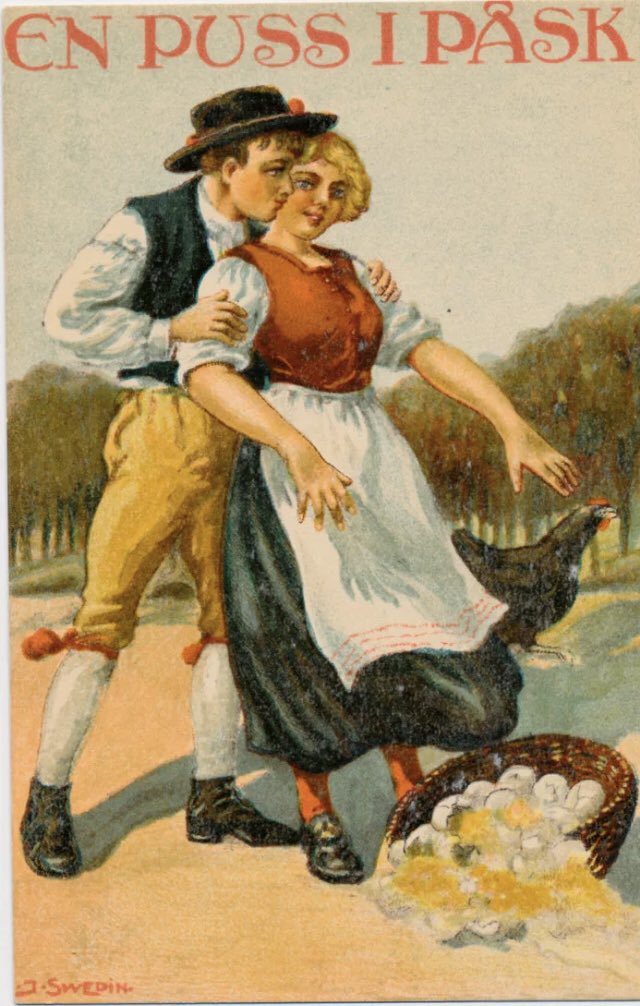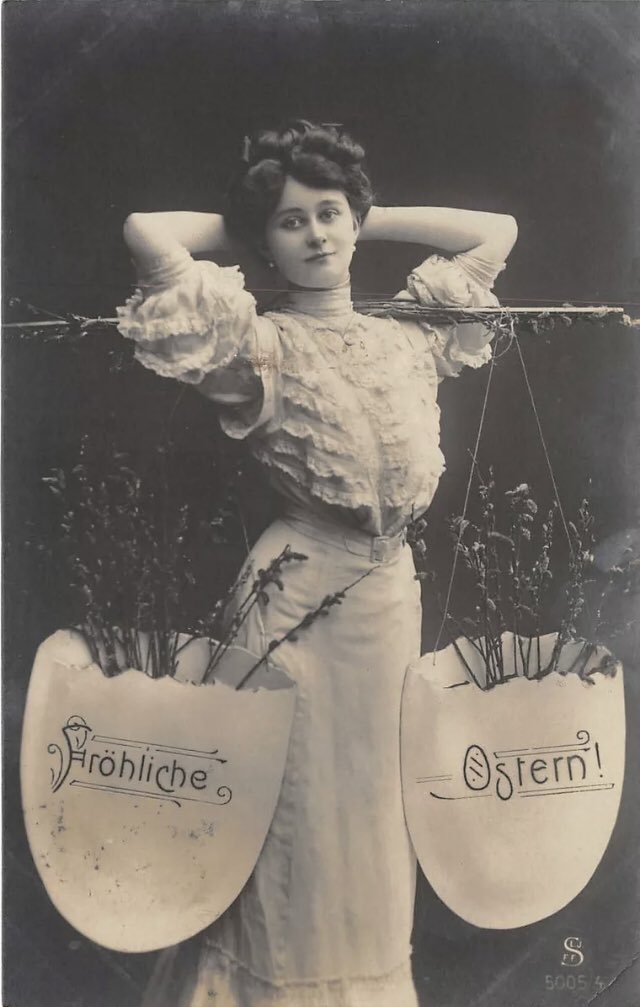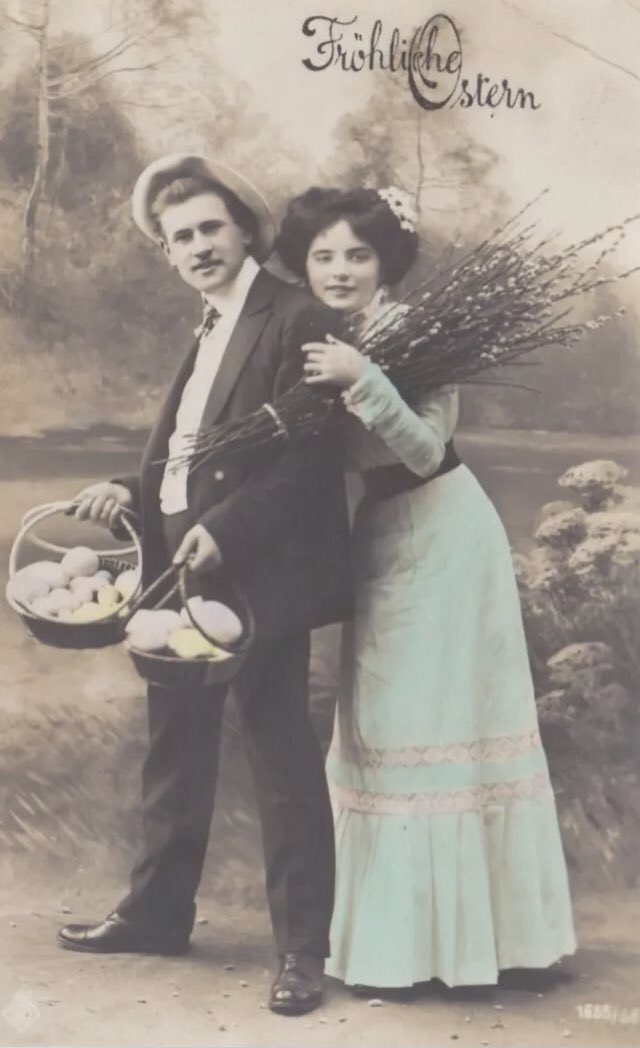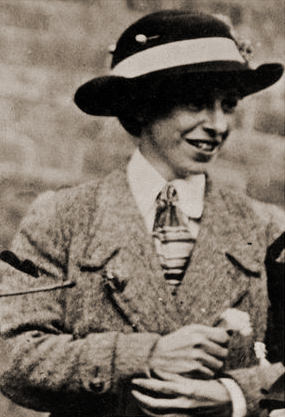Happy Easter! Over a 100 years ago this is how you might have celebrated - sending a card featuring giant eggs and women. Across Europe this was a thing. With slight differences between countries. First off the much loved hatching woman (A thread) 







In Germany the hatching woman was normally less erotic and more upright - more like a serving hatch or kiosk. ‘Frohe Ostern! kann ich Ihnen helfen?’ 



Meanwhile In France there’s some weird Easter shit going on. First the giant egg with a scary woman’s face saying PÂQUES! 





Also in France, like insta influencers, les femmes pose with eggs, caressing them. Sometimes with a man holding them admiringly, because like Lynx aftershave, eggs make you more attractive 







Meanwhile over in Italy, women know how to present their eggs 🥚 🥚 in a way that renders them irresistible and La Dolce Vita with a moustached man follows. 







In Sweden you need to learn a whole new Easter narrative. Forget the eggs, it’s all about the hens. Man turns up with a big grin and a chicken, you are surprised, fall over and it all ends with a puss (a kiss not a cat). I was hoping for better from Sweden... 







Austrian women have their own props. An elaborate double basket and sprigs of pussy willow with which to lure the man in jaunty hat. (Beware also their children who drop Easter bombs on you from an airship.) 







It’s time to talk about Britain.... What can I say? It’s all here. Caressing crucifixes, hoards of Easter brides in carriages driven by midnight rabbits. None of it looks much fun. Happy Easter 🐣 







@RevRichardColes and @revkatebottley Happy Easter 🐣 🥚
Estonia’s Easter cards feature men with beautiful eyes staring intensely at their egg bearing lady friends. It’s all about 🥚 🥚 eggs and 👀 eyes 







@marinamaral2 happy Easter xxx
Hungarian women wouldn’t be seen dead at Easter without a big bunch of Pussy willow and a winsome smile. 







I don't want to neglect Dutch Easter cards from around 1910 - 1920. Their stares are intense, the hair perfect and lips sumptuous. And they hold flowers and eggs perfectly.
(Images from Wellcome Digital Library)


(Images from Wellcome Digital Library)



• • •
Missing some Tweet in this thread? You can try to
force a refresh






























